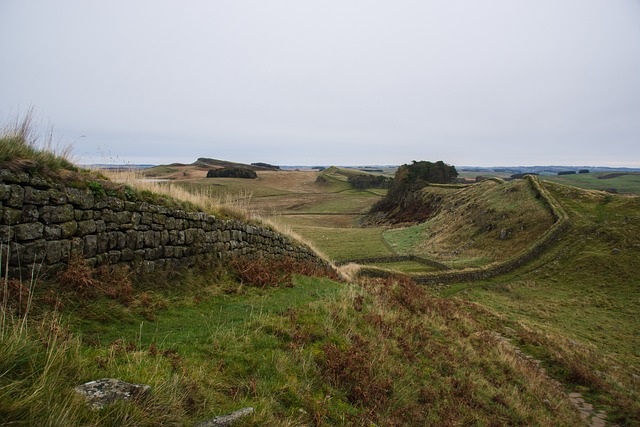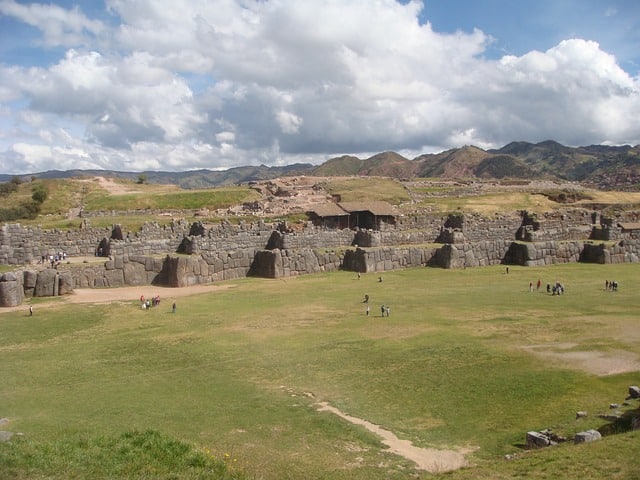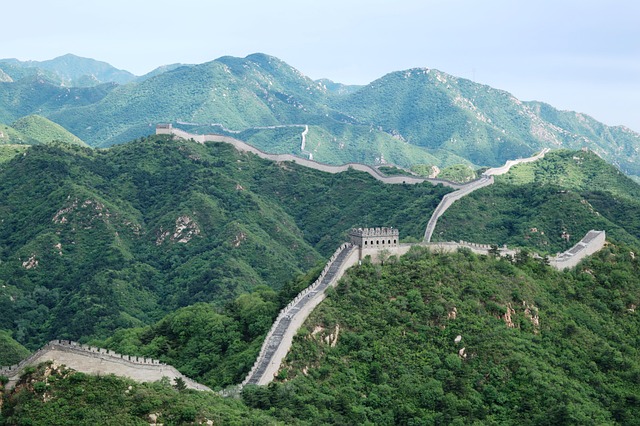People have been erecting walls as a means of demarcation, defence, and communication since prehistoric times. Modern periods have also seen the construction of walls for artistic purposes and as monuments. However, walls always seem to take centre stage in any given setting, regardless of their function.
9 World-Famous Walls
1. Vietnam Veterans Memorial Wall
Located in the nation’s capital, the Vietnam Veterans Memorial honours those who served in the Vietnam War. Designed to honour the Vietnam War heroes who lost their lives or went missing without a trace, the Vietnam Memorial has been called “the most moving memorial in the city.” Its purpose is to honour the sacrifice of those warriors regardless of political affiliation.
The Memorial Wall, Maya Lin’s masterwork, consists of two slabs of black granite that include the engravings of 58,256 individual soldier names.
2. Hadrian’s Wall
The Romans constructed Hadrian’s Wall to fortify their province Britannia from the Scottish clans. Running from the North Sea to the Irish Sea, it encircles northern England for 117 kilometres (73 miles). The Roman Emperor Hadrian visited in 122 AD, and construction began shortly after. It took about six years to finish.

Roughly nine thousand troops and cavalrymen were stationed along the wall. Even though we can only see fragments of this world-famous wall today, it is still one of England’s top tourist destinations. From Wallsend all the way to Bowness-on-Solway, a national trail traces the whole length of the wall.
3. Wall of Ston
Perched on the Peljesac peninsula in southern Croatia stands a string of fortified stone walls known as the Walls of Ston. From Ston to Mali Ston, a wall was constructed at the peninsula’s narrowest point, right before it meets the mainland. The wall that connects these two minor towns, which is 5.5 kilometres (3.5 miles) long, was finished in the 15th century. It included 40 towers and 5 strongholds.
The city of Dubrovnik and its valuable salt pans were designed to be safeguarded by this fortification, which served as a second line of defence. Its length is second only to Hadrian’s Wall, which separates England and Scotland, as the longest wall in Europe.
4. Walls of Troy
Famous in Homer’s epic poem, the Iliad, is the mythical city of Troy, located in modern-day northwest Turkey. The Trojan War supposedly occurred here, as described in the Iliad. Archaeologists have uncovered many levels of artefacts at the Troy site.
The stratum Dating back to the middle to the end of the thirteenth century BC, Troy VIIa was likely the Troy described by Homer. The world-famous walls of Troy may still be made out in part. Today, Troy welcomes a sizable annual influx of tourists. A huge wooden horse constructed as a playground for children, along with stores and a museum, makes the visitor witness a very commercialised sight.
5. Great Zimbabwe Walls
A vast region in modern-day Zimbabwe is home to a complex of stone remains known as The Great Zimbabwe. In contrast to the hundreds of smaller ruins, or Zimbabwes, scattered over the nation, this one is called a “Great” site. The native Bantu people began building it in the 11th century and kept at it for more than 300 years.
There may have been as many as 18,000 people living in Great Zimbabwe during its height. As the biggest ancient construction south of the Sahara Desert, its most impressive building, the Great Enclosure, has walls as high as 11 metres (36 ft) and extends around 250 metres (820 ft).
6. Walls of Babylon
Ancient Mesopotamian city-state Babylon’s Walls were among the first wonders reported by Antipater of Sidon. A chariot race may be imagined along the walls of impregnable Babylon, as he writes in the opening lines of his poem. Ishtar Gate was one of the Seven Wonders in an earlier iteration of the list. Part of the world-famous Walls of Babylon, it was built in 575 BC.
The blue-glazed tiles used to build the gate and the walls alternated with rows of aurochs and dragons in bas-relief. Saddam Hussein began restoring the site and building new structures on top of the ancient ruins in 1983. If the prospect of travelling to Iraq is too daunting, you may see a replica of the Ishtar Gate and walls constructed in part from materials found in Babylon in Berlin’s Pergamon Museum.
7. Western Wall
One of the most well-known Jewish holy sites in Jerusalem’s Old City is the Western Wall, also called the Wailing Wall. Herod the Great built almost half of the wall—including its seventeen courses—below street level in 19 BC, towards the close of the Second Temple era. Later on, beginning in the seventh century, more levels were constructed.
As the last remaining structure from the Holy Temple, the Western Wall is revered by Jews. Because it is the nearest legally accessible location to the holiest landmark in Judaism—the Foundation Stone, which is located on the Temple Mount—it has become a pilgrimage site for Jews.
8. Great Wall of China
To defend the northern boundaries of the Chinese Empire against invasions by northern nomadic tribes, the Great Wall of China was constructed, renovated, and maintained from the 5th century BC until the 16th century. There have been other walls constructed that were formerly called the Great Wall.

Even though it is one of the most well-known walls, the one constructed by the first Chinese emperor, Qin Shi Huang, between 220 and 206 BC, is mostly in ruins. The bulk of the current wall was constructed between 1368 and 1644 AD, during the Ming Dynasty.
The length of the Great Wall, including all of its outgrowths, is 8,851.8 kilometres (5,500.3 miles), according to the most current and extensive archaeological investigation. The Great Wall is in varying degrees of good to damaged shape. The Great Wall is in a state of ruin owing to erosion and vandalism in many places, however sections close to tourist centres have been conserved and even heavily restored.
9. Sacsayhuaman
Above the Peruvian city of Cusco, in a fortified complex known as Sacsayhuamán, stands. The puma, an emblem of the Inca dynasty, was the inspiration for the layout of the imperial capital of Cusco. The sacsayhuamán hill served as the puma’s head, the river Tullumayo as its spine, and the main square as its gut. Lime stones of gigantic size are used to construct three parallel walls on various elevations. Some have speculated that the puma’s fangs could be depicted by the zigzag walls.

The largest stones are reserved for the lower floors. The biggest one stands at a lofty 8.5 metres (28 feet) and carries over 140 metric tonnes of weight. Because of the design of the wall, not even a single sheet of paper can fit between all of the stones. The remains are believed to have survived the disastrous Cuzco earthquakes due to their perfection, the diversity of their interconnecting designs, and the way the walls slope inward.
Read more: Exclusive London to Colchester bus: Tickets, Timings, Classes | 2024




